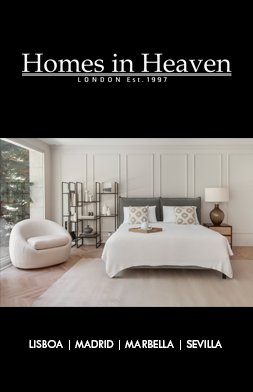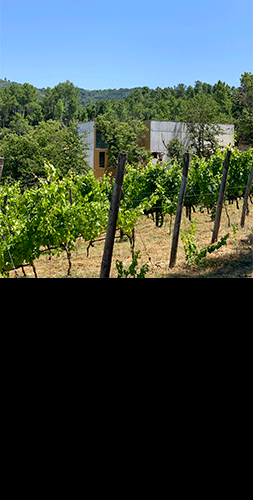To what areas can you compare architecture?
I read a lot. I think writers help me a lot. Therefore, to literature.
Is architecture luxury?
Architecture is luxury. Because if it’s not luxury it’s construction.
And space is luxury?
It is. Nowadays, space is the luxury of architecture.
If you were not an architect, what would you like to be?
A photographer. I used to be a photographer, but I know I cannot be one. Nowadays I would like to write.
If you were not an architect in Portugal, which country would you choose to practice architecture?
Spain. Because it has the best European schools, to be an architect the courses in Spain take nine years, here in Portugal they take six years. That means, even if they are not great architects, their production is well above average and it is a respected profession.
Do you consider yourself to be classic or irreverent in architecture?
Classic. Utopias are not of much interest. I care about the current movements, not about the future idyllic of utopia. I am interested in the rules that have already worked, that history shows me, and I use them.
What is the most unusual thing you have been asked to include in a space?
I won’t say by whom, but the most unusual thing was a swimming pool up against the bed. You get out of bed and fall into the pool.
Are you a man from the North or from Oporto?
I am from both, but more from the North, because I spent much of my childhood in the Minho, but I always lived in Oporto.
What memories do you recall of your childhood?
The rural buildings in stone and granite, because my family is from Braga. I would spend my holidays in a village near Braga and I have this image of the houses with loose stone walls. My father began to organise visits to castles and monasteries. Later I even got to renovate one of them – the monastery of Santa Maria do Bouro. We had that thing of The Famous Five, adventure books by English writer Enid Blyton. We would go to the ruins and imagine those scenarios. After The Famous Five it was The Secret Seven. Therefore, literature is linked to architecture, even in childhood.
Who would you invite for the perfect dinner?
The pope. I would like to meet him. I admire him. And I’m not catholic. I’m a Christian. But the pope is a ‘guy’ who has taken a spin on this with great courage.
What would you never allow in a space you have designed?
Let me think. That’s complicated. I was going to say Trump, but I don’t want to say it because that’s lame, poor man (he laughs). I would not allow them to change it without telling me. Spaces exist to be changed, I change them myself, and people change them with use, because people do not always get it right. You have to correct things. Now I would not want them to be violated without me knowing.
And does it have to have?
It has to be functional. If it is functional it is also beautiful. Beauty does not exist without utility.
What makes you laugh the most?
I laugh a lot. Humour is the expression of failure in a clever way. Don’t you agree?!
You are very philosophical...
No I’m not, maybe I am (he laughs).
Where is the best place to eat fish in Oporto?
Fish... I like Gaveto. I often order a dish that we used to eat at my parents’ house, which is oven roasted red sea bream. They do it to order and it’s good.
What kind of music do you like?
Jazz and classical.
How do you deal with stress?
By working. Because if I’m stressed it’s because I have a serious problem and as long this problem remains unsolved, I stay stressed. So, it’s by working.
Do you have any holiday time?
I do. There are no ‘holidays’, where you contemplate the sea. I go on many holidays during the year, lasting a few days, two to three days. I travel a lot and often, during the works, instead of going back on the same day, I spend a day in the city.
Does life change every day?
The projects change every day. The projects are life, so ... (he laughs).
And now, we would like to set you a challenge. Imagine that the team from Villas&Golfe, a 17-year-old magazine, asked you to draw/imagine the Villas&Golfe ‘house’/‘office’. In just a few strokes, on a piece of paper, what would you see it as?
I’m looking for the ideal house. I think it exists, but I’m yet to find it. This ideal house is the ideal house for me. In fact, I have already said this to clients and they get angry. They pay me to do the house for them and I’m doing it for me (he laughs). The better it is for me, the better it is for them. Now that we’re being philosophical, Espinoza (the philosopher) said: «I have to be fine with myself to be able to help others and to be fine with others if not ...», I also work like this. Writers are also looking to write the ideal book because they always write the same book. They change the subject, the lady changes, then they put on the red dress..., but the story is always the same. And in architecture we all want to make the ideal house.
In just a few strokes, what would the architect show us?
I do not believe that architecture is an act of inspiration in which muses appear. You close your eyes... or as with painters... it’s not like that. I need conflict, I need the client, to explain what he wants, and I need the discord, to make me question something and have a flash. Then there is a solution.
And now the blank piece of paper... in just a few strokes, you will imagine what would be our Villas & Golfe world...
I did the tender for the house of a German architect, his name is Shinken, and I did a refinery house. It was all open, he could choose whatever he wanted. I did a Galp refinery house. Iron and such. And I did a Greek temple. I find refineries beautiful. And, maybe, he did a construction there.
Description of the drawing made in 3.55 minutes:
The people themselves are the worst at explaining what they create (he laughs). We have the sea, the water, the beach huts, the seafront road, the bicycle, the refinery, which is closed, and you bought some irons, some beams, and there’s a lift, and you work here. It is dedicated to Villas& Golfe. And it’s signed. Are you going to publish the picture in the magazine?!
Yes.
They’ll say «This guy is full of air» (he laughs).
Not at all. You accepted the challenge, this is different.
And I accepted!













